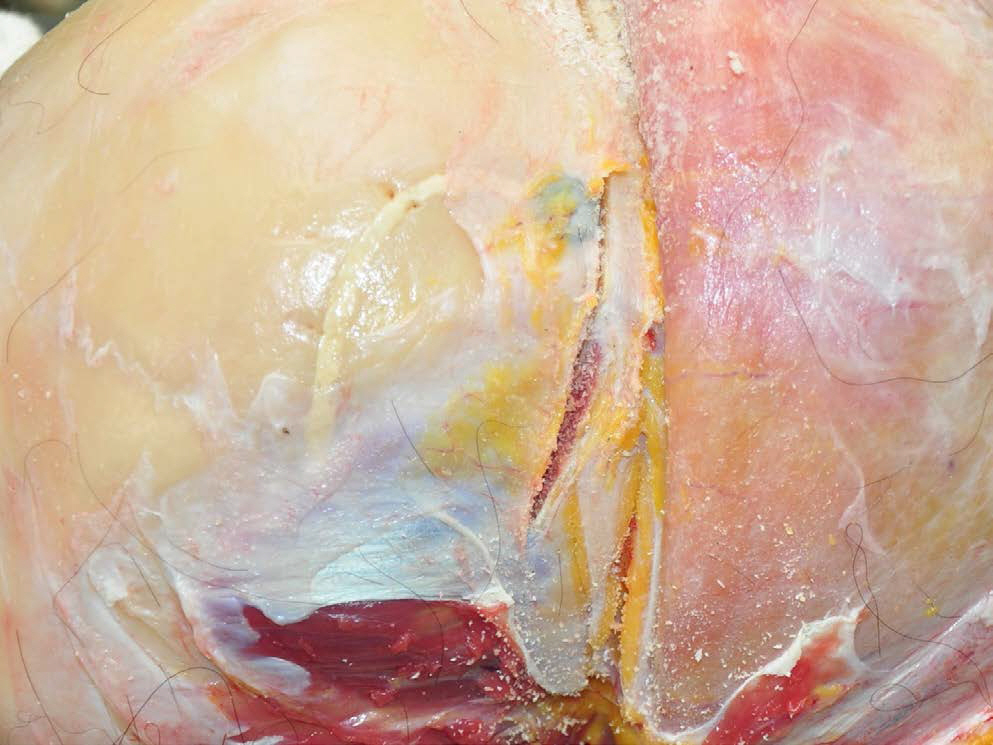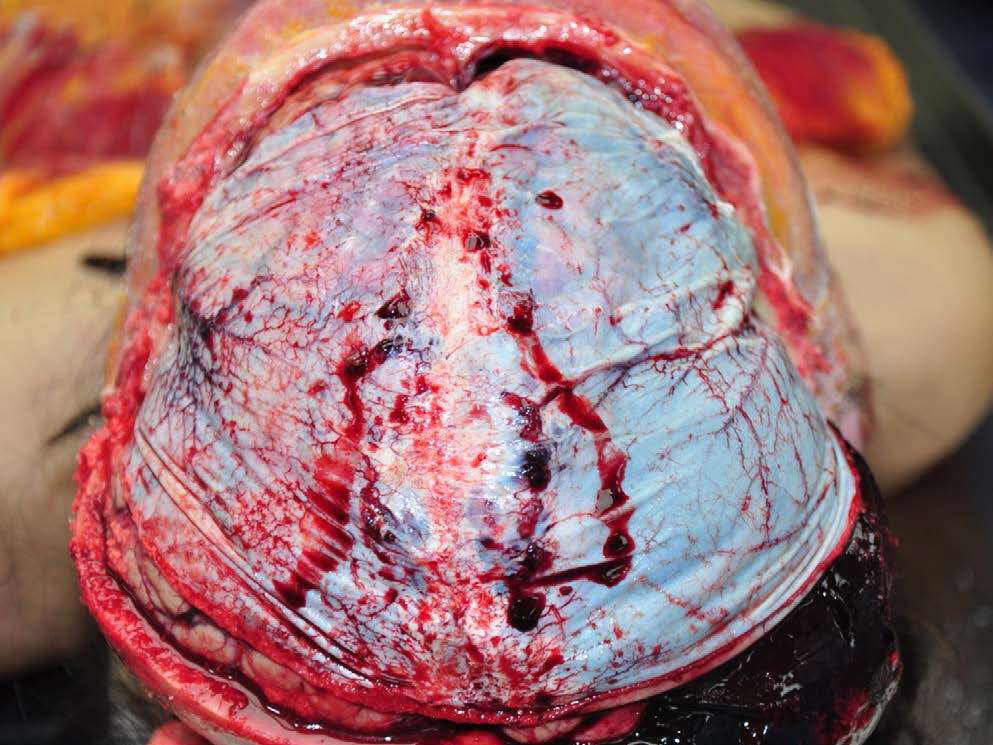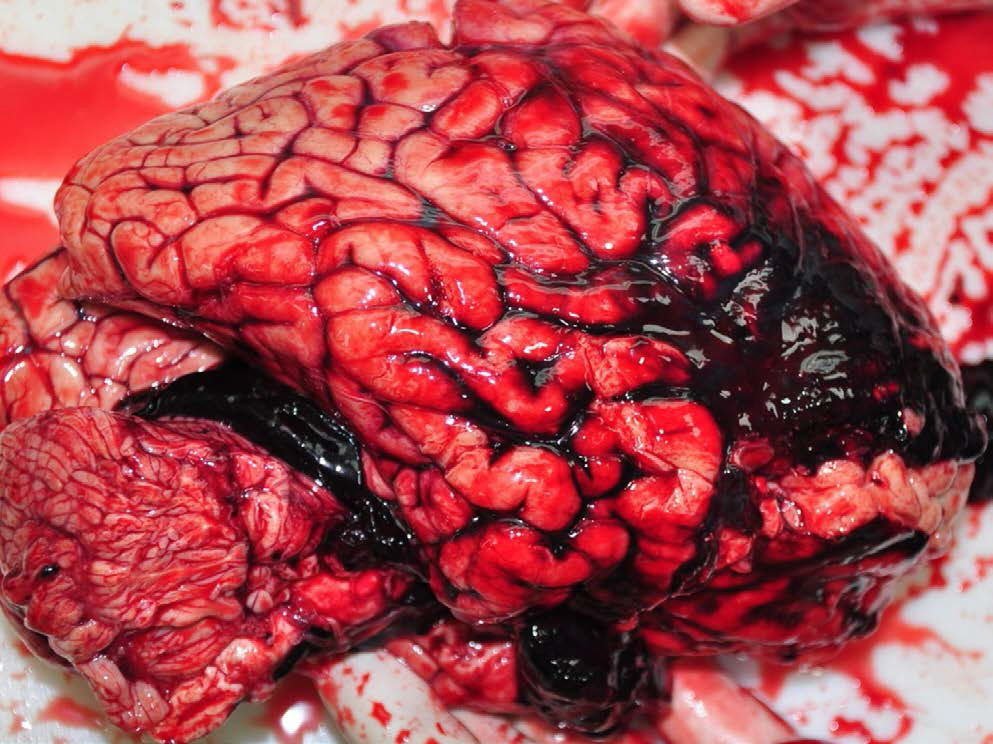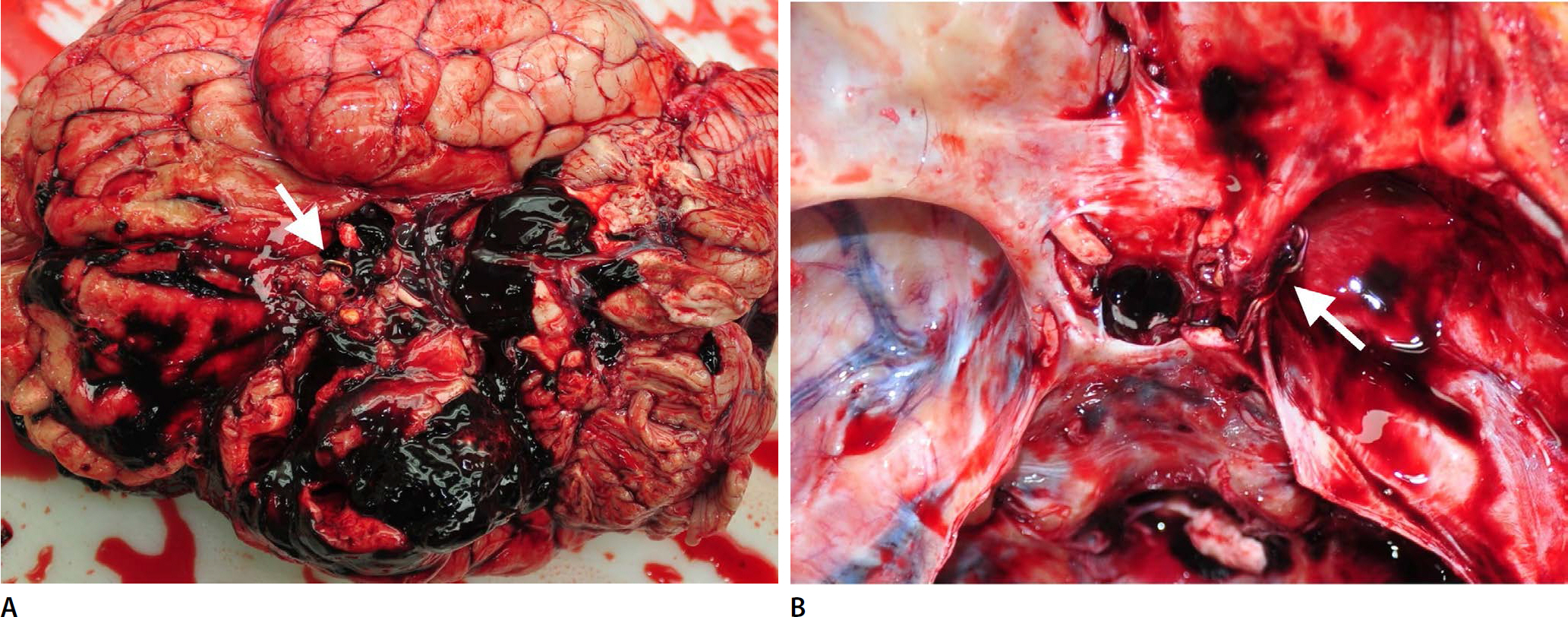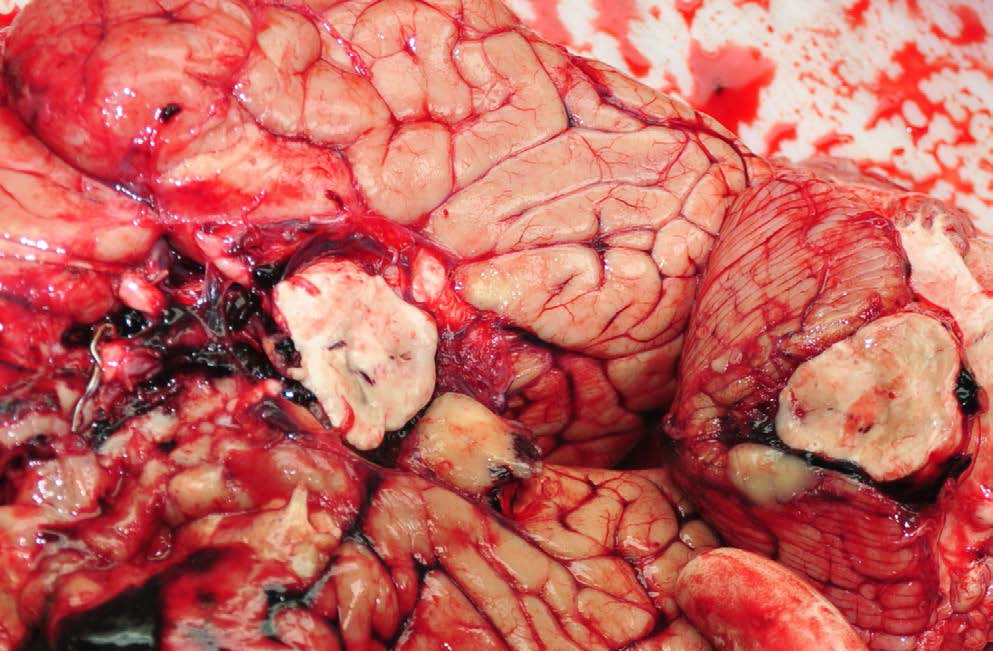Korean J Leg Med.
2018 Feb;42(1):22-25. 10.7580/kjlm.2018.42.1.22.
Subarachnoid Hemorrhage with Subdural Hematoma due to Ruptured De Novo Aneurysm after Aneurysmal Clipping via Pterional Approach: An Autopsy Case
- Affiliations
-
- 1Department of Legal Medicine, Korea University College of Medicine, Seoul, Korea. kuforen@gmail.com
- KMID: 2406018
- DOI: http://doi.org/10.7580/kjlm.2018.42.1.22
Abstract
- Subdural hematoma (SDH) due to spontaneous rupture of intracranial aneurysm rarely occurs. The prevalence of subarachnoid hemorrhage (SAH) with SDH is approximately 0.5%-10.3% of all aneurysmal SAH. We report a case of aneurysmal rupture with SDH and SAH due to arachnoid defect after aneurysm clipping. The decedent was a 51-year-old woman who underwent brain surgery for SAH a few years ago. Two days before she died, she had nausea and sentinel headache. She was alive in the morning and was found dead at 6 PM. Injuries in the external surface were not found. A fresh SDH, measured approximately 90 mL, was found in the right hemisphere. SAH was diffusely distributed at the base of the brain and the right sylvian fissure. Two aneurysmal clippings were found in the anterior communicating artery and right internal carotid artery. A ruptured de novo aneurysm was also found in the right proximal middle cerebral artery. An uncal herniation was also observed. The cause of death was SAH with SDH due to de novo intracranial aneurysm. The tearing caused by the adhesion between the aneurysm and arachnoid, high blood pressure, and massive bleeding has been thought to be the causative mechanism of aneurysmal SAH with SDH. However, in this case, the arachnoid defect was caused by aneurysmal clipping through pterional approach. This defect served as the passage between the subarachnoid and subdural spaces. The autopsy for recurrent intracranial aneurysm will increase according to the extending life expectancy of patients after aneurysmal clipping.
MeSH Terms
Figure
Reference
-
1. Schuss P, Konczalla J, Platz J, et al. Aneurysm-related subarachnoid hemorrhage and acute subdural hematoma: single-center series and systematic review. J Neurosurg. 2013; 118:984–90.
Article2. Feng Z, Tan Q, Li L, et al. Subdural hematoma caused by rupture of a posterior cerebral artery aneurysm. Neurosciences (Riyadh). 2016; 21:161–3.
Article3. Marbacher S, Fandino J, Lukes A. Acute subdural hematoma from ruptured cerebral aneurysm. Acta Neurochir (Wien). 2010; 152:501–7.
Article4. Han J, Lim DJ, Kim SD, et al. Subdural hematoma without subarachnoid hemorrhage caused by the rupture of middle cerebral artery aneurysm. J Cerebrovasc Endovasc Neurosurg. 2016; 18:315–21.
Article5. Song TW, Kim SH, Jung SH, et al. Rupture of distal anterior cerebral artery aneurysm presenting only subdural hemorrhage without subarachnoid hemorrhage: a case report. Springerplus. 2016; 5:73.
Article6. Biesbroek JM, van der Sprenkel JW, Algra A, et al. Prognosis of acute subdural haematoma from intracranial aneurysm rupture. J Neurol Neurosurg Psychiatry. 2013; 84:254–7.
Article7. Yagi K, Irie S, Inagaki T, et al. Intraoperative arachnoid plasty has possibility to prevent chronic subdural hematoma after surgery for unruptured cerebral aneurysms. Neurol Med Chir (Tokyo). 2015; 55:493–7.
Article8. Tsutsumi K, Ueki K, Morita A, et al. Risk of aneurysm recurrence in patients with clipped cerebral aneurysms: results of long-term follow-up angiography. Stroke. 2001; 32:1191–4.9. Saukko P, Knight B. Knight's forensic pathology. Boca Raton: CRC Press. 2016.
Article
- Full Text Links
- Actions
-
Cited
- CITED
-
- Close
- Share
- Similar articles
-
- Pure Acute Subdural Hematoma without Subarachnoid Hemorrhage Secondary to Posterior Communicating Artery Aneurysm Rupture: A Case Report
- Pure Subdural Hemorrhage Caused by Internal Carotid Artery Dorsal Wall Aneurysm Rupture
- Coiling as Retreatment in Intracranial Aneurysm of de novo Formation or Regrowth: Case Report
- Subdural Hematoma Due to Ruptured Intracerebral Aneurysm
- Rupture of De Novo Anterior Communicating Artery Aneurysm 8 Days after the Clipping of Ruptured Middle Cerebral Artery Aneurysm

